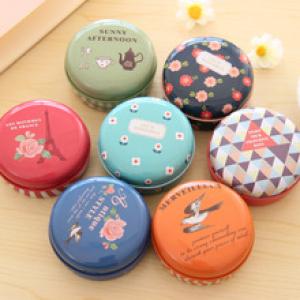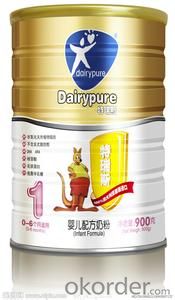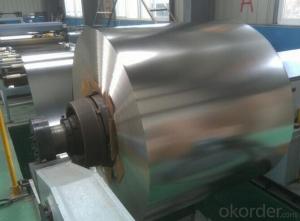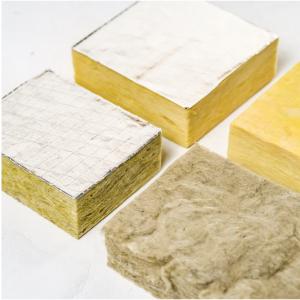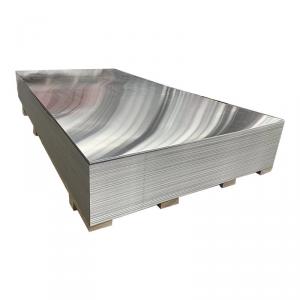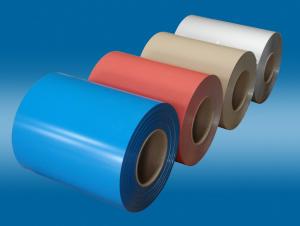Round Tinplate Container - SPCC Printed Tinplate, EN 10202, Stone, Bright Finish, Fortune Global 500
- Loading Port:
- Tianjin
- Payment Terms:
- TT OR LC
- Min Order Qty:
- 25 m.t.
- Supply Capability:
- 40000 m.t./month
OKorder Service Pledge
OKorder Financial Service
You Might Also Like
1.Usage
Tinplate is widely used for making all types of containers, containing industrial usage such as paint can, oil can, aerosol cans etc., and food cans like milk powder cans, tomato paste can, dry food cans etc.
2. Quality
As a state owned company and a large tinplate supplier in China, our tinplate quality ranks 1st level in China, similar to Bao Steel, Posco etc.
3. Specification
standard: GB/T2520, JIS G3303, DIN EN10202
Material: MR /SPCC
Thickness available: 0.16-0.50MM
Width available: 600~1050MM
Temper grade: T1 – DR8
Tin coating: ordinary 2.8g/2.8g, 5.6g/5.6g and others
Package: sea worthy export package.
Applications: Tin can for chemicals & paint cans, industrial cans, food cans
4. Our factory photo & equipments

5. Our Markets:
now our tinplate has been sold to more than 50 countries, including Europe country, Gulf Area, South American, South Afric etc.
6. Our Overseas Wareouses:
Furthermore, in the year 2014, we have more than 10 overseas warehouses all over the word, located in KSA, UAE, Oman, Russia, Kuwait, Qatar, Oman, Chile, Brazil etc.
7. FAQ
a. what's the annual output?
about 500,000 tons per year.
b. where's the raw matrial from?
our hot rolled coil is purchased from Capital Steel and other state owned mill, with quite good quality.
c. how long is the delivery time?
normally for SPCC about 45~55 days, while 65~75 days for MR material
d. how to control the quality during production process?
inside our workshop, we have MES syestem. It realizes the optimization of the production procedure in the workshop. It could record each step of the whole production procedures, and if some problem appears, factory could easily found and take action, it’s quite helpful to monitor and control the quality.
- Q:How does tinplate compare to other packaging materials in terms of shelf appeal?
- Tinplate stands out among other packaging materials in terms of shelf appeal due to its unique metallic appearance, which adds a sense of premium quality and attractiveness to the product. Its high gloss finish and ability to be printed with vibrant colors and intricate designs make it visually appealing, catching the attention of consumers and stimulating their interest. Additionally, tinplate offers excellent durability and protection, ensuring that the product remains in pristine condition on the shelf, further enhancing its shelf appeal.
- Q:Can tinplate be embossed or engraved?
- Yes, tinplate can be embossed or engraved.
- Q:How does tinplate packaging contribute to reducing food waste?
- Tinplate packaging helps reduce food waste by providing a durable and airtight barrier that protects food from spoilage, contamination, and exposure to air, moisture, and light. It helps extend the shelf life of products, preserving their freshness and nutritional value for longer periods. Additionally, tinplate packaging is highly recyclable, making it a sustainable choice that reduces the environmental impact of food packaging waste.
- Q:How is tinplate coated with organic materials?
- Tinplate is coated with organic materials through a process known as lacquering or varnishing. The organic coating is typically applied to protect the tinplate from corrosion and enhance its aesthetic appeal. The tinplate is first cleaned and treated to ensure proper adhesion of the organic material. Then, the organic coating is usually sprayed or dipped onto the tinplate surface, forming a thin protective layer.
- Q:Does tinplate require any specific handling or storage conditions?
- Yes, tinplate does require specific handling and storage conditions. It should be protected from moisture and kept in a dry environment to prevent rusting. Additionally, it is recommended to store tinplate in a cool and well-ventilated area to maintain its quality and prevent any potential damage.
- Q:Can tinplate be used for packaging non-food items?
- Yes, tinplate can be used for packaging non-food items. Tinplate is a versatile material that offers excellent durability, corrosion resistance, and tamper-proof properties. It is commonly used for packaging various non-food products such as cosmetics, pharmaceuticals, aerosol cans, and household goods.
- Q:What are the different ways to stack tinplate cans?
- There are several different ways to stack tinplate cans, including the straight stack, pyramid stack, interlocking stack, and the crisscross stack. Each method offers its own advantages and considerations in terms of stability, space efficiency, and ease of access.
- Q:Can tinplate be used for packaging pet food?
- Yes, tinplate can be used for packaging pet food. Tinplate is a popular choice for food packaging due to its durability, corrosion resistance, and ability to protect against light, oxygen, and moisture. It is commonly used for canned goods, including pet food, as it helps to maintain the freshness and quality of the product.
- Q:How is tinplate coated on both sides?
- Tinplate is coated on both sides through a process called electrolytic tinning. In this method, a thin layer of tin is applied to both sides of a steel sheet by immersing it in an electrolyte solution and passing an electric current through it. The positive electrode is made of tin, and the negative electrode is the steel sheet. This causes tin ions from the positive electrode to deposit onto the steel sheet, resulting in a uniform coating on both sides.
- Q:What are the main applications of tinplate in the furniture industry?
- Tinplate is primarily used in the furniture industry for the production of decorative metal trims and accents. It is commonly used for creating ornamental elements on furniture pieces such as drawer handles, cabinet knobs, and decorative trimmings. Tinplate's corrosion resistance and malleability make it a suitable material for adding intricate and elegant details to furniture designs while also providing durability and protection against wear and tear.
1. Manufacturer Overview |
|
|---|---|
| Location | |
| Year Established | |
| Annual Output Value | |
| Main Markets | |
| Company Certifications | |
2. Manufacturer Certificates |
|
|---|---|
| a) Certification Name | |
| Range | |
| Reference | |
| Validity Period | |
3. Manufacturer Capability |
|
|---|---|
| a)Trade Capacity | |
| Nearest Port | |
| Export Percentage | |
| No.of Employees in Trade Department | |
| Language Spoken: | |
| b)Factory Information | |
| Factory Size: | |
| No. of Production Lines | |
| Contract Manufacturing | |
| Product Price Range | |
Send your message to us
Round Tinplate Container - SPCC Printed Tinplate, EN 10202, Stone, Bright Finish, Fortune Global 500
- Loading Port:
- Tianjin
- Payment Terms:
- TT OR LC
- Min Order Qty:
- 25 m.t.
- Supply Capability:
- 40000 m.t./month
OKorder Service Pledge
OKorder Financial Service
Similar products
New products
Hot products
Hot Searches
Related keywords
